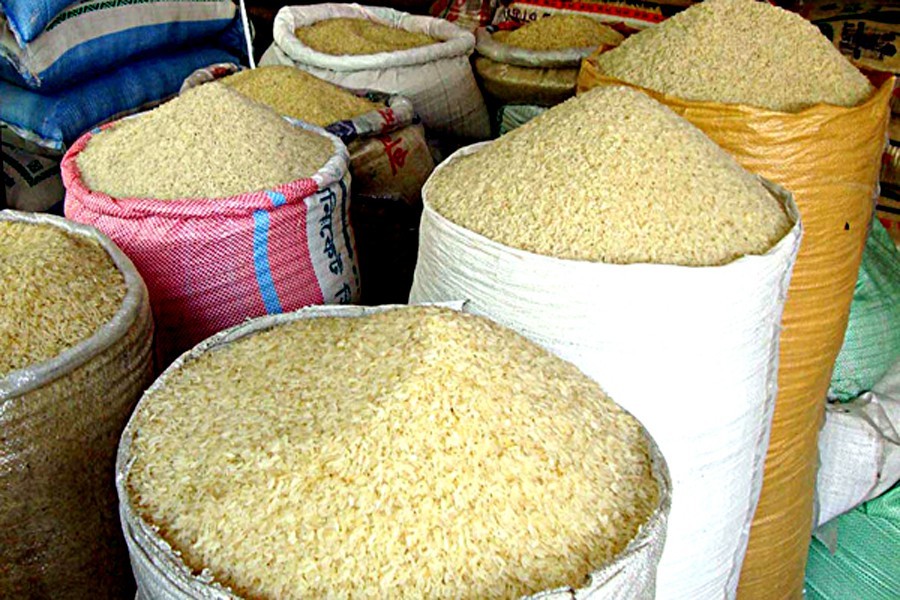
Published :
Updated :

The prices of rice have started increasing across the country for last few days, adding to woes of the commoners.
Prices of Brridhan-28 and 29 and Miniket showed a Tk 50-100 hike per 50-kg sack at mill gates in Naogaon, Kushtia, Rangpur, Dinajpur in last four days, according to Bangladesh Auto Major Husking Mill Owners Association.
Brridhan-28 rice was sold at Tk 2,350-2,380 a sack while quality Miniket at Tk 2,650-2,680 a sack at mill gates in Naogaon, Kushtia and Rangpur for last three days.
Traders said high paddy prices as well as flood in many milling hubs had caused the hike.
Prices of rice also started increasing in Dhaka from Monday noon, according to traders.
However, prices of rice in the capital increased by Tk 2.0-3.0 a kg as coarse rice sold at Tk 40-44, medium quality at Tk 50-53, and finer at Tk 56-68 a kg.
Md Jewel Rana, a grocer at West Dhanmondi, said prices of rice increased by Tk 2.5-3.5 a kg at Mohammadpur Krishi Market wholesale from Sunday evening.
Rice prices might go up further after their old stocks ran out, he added.
Hazrat Ali, proprietor of Olima Traders in Nilphamari Sadar, told the FE that rice prices first started rising in Naogaon and Kushtia which affected other regions later.
He said Brridhan-28 paddy prices rose to Tk 1,100-1,150 a maund now which was Tk 850 a maund in July.
Many traders and big farmers are storing paddy following flood fearing crop loss during the Aman season, he added.
Rice prices started increasing at a time when the government agency revealed that production of the key staple was an all-time high of 20.26 million tonnes.
Bangladesh Rice Research Institute (BRRI) on Sunday also said there will be no shortage of rice until November as the country will have 5.55 million tonnes of surplus rice during the period.
Bangladesh Rice Research Institute said farmers have stored 29 per cent of total paddy they produced, which was 20 per cent last year.
It also said such a hike in paddy storage by farmers and some new market players might have caused a hike in the prices of the key staple.


 For all latest news, follow The Financial Express Google News channel.
For all latest news, follow The Financial Express Google News channel.